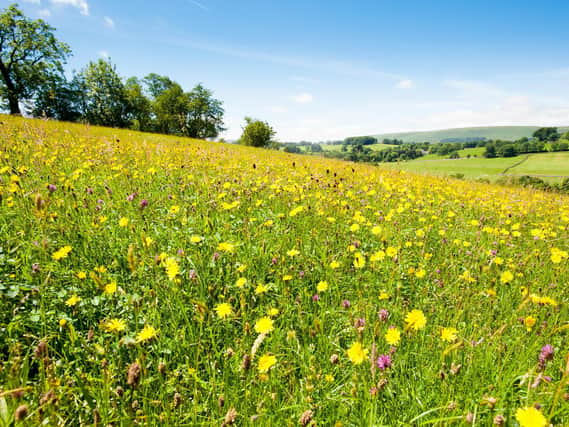Why you should take the time to explore our beautiful nearby meadows | Sarah Robinson


Working with local farmers and volunteers we survey, restore and manage important habitats for wildlife across the Pendle Hill area, including species rich grassland and moorland.
The Pendle Meadows Project was born as a result of working from home last spring during lockdown.
Advertisement
Hide AdAdvertisement
Hide AdLike the rest of the country, the Pendle Hill Landscape Partnership team was confined to home from March last year.
Despite the obvious worry about the pandemic, this allowed time to develop new projects, and for me, this new project has been the Pendle Meadows Project.
Having spent time pouring over maps, making use of the knowledge I have of farms and other grassland sites in the project area and talking with members of the Pendle Hill farmer network I facilitate, I came up with a shortlist of 13 meadows I was interested in exploring further.
Once I had spoken to all the owners, and we were allowed to resume our outdoor work in June last year, I was able to get the project started.
Advertisement
Hide AdAdvertisement
Hide AdThe sites range from large agricultural meadows the size of seven football pitches down to the smallest, which is three square metres.
I surveyed all the sites for their traditional grasses and wildflowers and then over the course of August and September last year, added in a range of additional species with seed collected from existing meadows across the Forest of Bowland Area of Outstanding Natural Beauty.
After waiting almost a year, I have just started to go back and resurvey the meadows, and it is fantastic to see the results.
Yellow rattle, meadow foxtail and eyebright can be found flowering just the first year after seeding, whilst others such as red clover, knapweed, great burnet and rough hawkbit will take longer to establish.
Advertisement
Hide AdAdvertisement
Hide AdAs well as the additional wildflowers, the meadows are home to a wide variety of butterflies, moths, bees, grasshoppers and other insects, as well as small mammals such as bank voles.
They are used as feeding sites by bats and summer visitors such as swifts and swallows.
Meadows are a really important part our local biodiversity and support a large web of life, as well as being incredibly beautiful.
Many of the sites in this project have footpaths running through them or are areas open to the public.
Advertisement
Hide AdAdvertisement
Hide AdIf you have a chance, now is a great time to visit before the hay is cut. Take a look at Clarion House in Jinny Lane or Spring Wood in Whalley.
You can find more details on https://www.pendlehillproject.com/project/wild
Comment Guidelines
National World encourages reader discussion on our stories. User feedback, insights and back-and-forth exchanges add a rich layer of context to reporting. Please review our Community Guidelines before commenting.